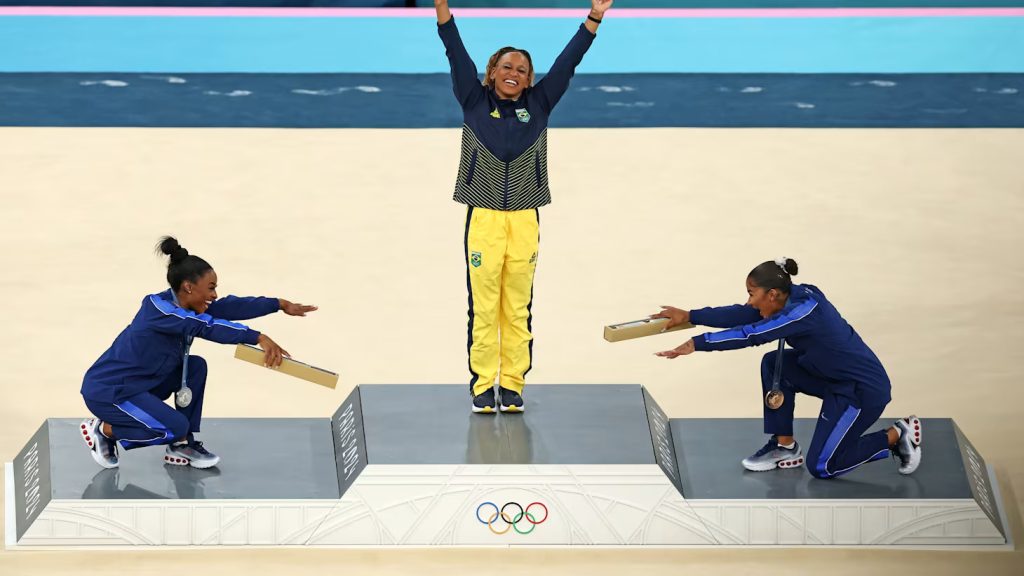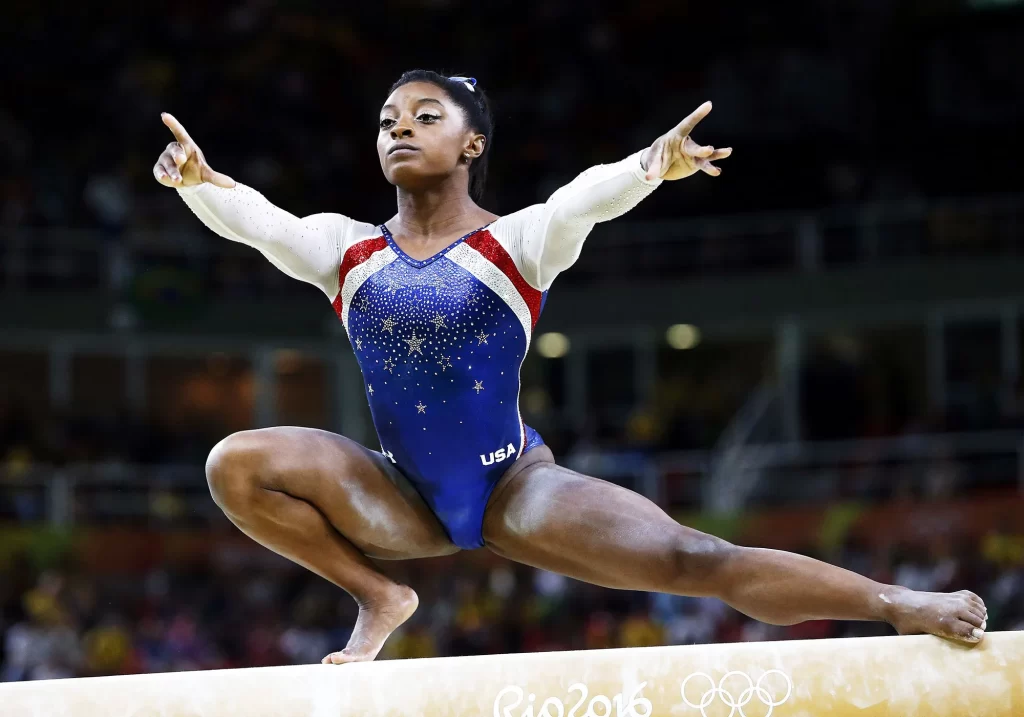by Ryan Yablonski
While on the podium Monday following the women’s floor exercise, Simone Biles, the most decorated gymnast in history, and Jordan Chiles, a three-time Olympic medalist, both bowed to the event’s gold medalist, Brazil’s Rebecca Andrade. It was the first ever all-black podium in women’s gymnastics and a moving celebration of unity.

The moment instantly was a snapshot which encapsulates everything that the Olympic Games represent. This was a mold breaking affirmation of diversity and sportsmanship in a sport that had, for the past century, mostly been underrepresented. “It was just the right thing to do,” Biles said about the moment that soon went viral, with even the Louvre itself suggesting it might be worthy enough for a spot somewhere in the vicinity of the Mona Lisa.
Among all the stories of the Paris Olympics, Simone Biles is the center of it all. She is unequivocally the most successful female gymnast of all time. In so many ways and so often she has defied stereotypes and silenced her critics. In the past it had often been said that the subjective judging of women’s gymnastics puts competitors in the “pretty little girls box,” favoring the most petite and delicate forms historically represented by countries from Asia and Eastern Europe. Russia’s dominance during the 80’s and 90’s is what comes to mind when most people think of famous gymnasts.
At the age of 27, Simone Biles is notably the oldest gymnastic medalist ever and her routines exhibit mastery and power resulting from decades of training. In her frustration, Valentina Rodionenko, head coach of the Russian artistic gymnastics team said, “I want to express my regrets about Biles’ victory [at the 2023 World Championships]. What is gymnastics? It’s scary to watch…she has no great performance, only difficulty. She only wins through difficulty.” This comment was received with rebuke on social media, as the irony of arguing that the most difficult routine should not be scored the highest was not lost on anyone. It was the last gasp of a bygone era met by global affirmation of the fact that the future of the sport looks to be in favor of diverse excellence rather than prejudice and gatekeeping.
Simone’s path to glory is familiar to many, which makes her so inspirational. She came from humble beginnings, with a difficult childhood spent in flux in and out of Ohio’s foster care system at the age of three until eventually being adopted by her grandparents when she was six. She also embraced a role as an adult as a spokesperson for ADHD and anxiety awareness to inspire young people and reduce stigmas surrounding mental health. She publicly withdrew from the Tokyo Olympics due to a series of panic attacks known as the “twisties” and had to respond to critics head on by championing the importance of maintaining mental health and the acceptance of the impact that anxiety has on even the most highly performing people on the planet.
Perhaps the greatest affirmation of her status as an icon for young black girls in America was the podium pictures from Monday night. She could have sulked after small mistakes resulted in a silver medal rather than an all-gold medal sweep of her four events. Instead, she and her teammate bowed and pointed to celebrate Rebeca Andrade, the winner from Brazil who became the most decorated Latin American gymnast of all time. With nothing else left to prove as the most decorated gymnast in history, Simone is likely passing the torch to this generation and retiring after collecting eleven Olympic medals, a Presidential Medal of Freedom and a total of 41 medals in international competition.

